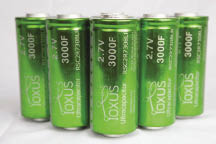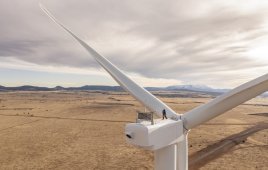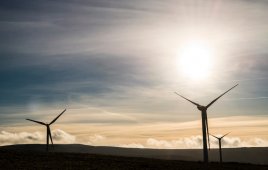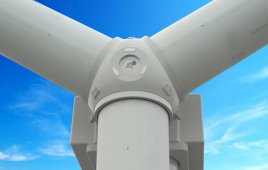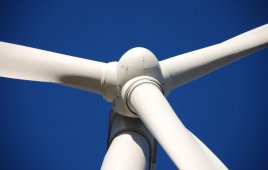Lead acid batteries often get tapped for backup pitch-control power because they are inexpensive. But they come with serious drawbacks in excess weight and a relatively short life, which boosts maintenance costs.
A good replacement may be in the next generation of ultracapacitors. One version from Ioxus, for example, promises better electrical, mechanical, and thermal characteristics.
“Ultracapacitors used in pitch controls are rather large systems put together with our company’s current 16V, 58F (Farad) iMOD module,” says Ioxus VP Chad Hall. “About 90 such modules, some 150 lb, are needed per blade. But with a more recent ultracapacitor it is possible to reduce the number of cells required for a lighter, more efficient system. Ultracapacitors typically mount in a well-packed hub so lighter and smaller cells provide an improvement.”
The recent iCAP modules are individual components but Hall says their features, such as built-in cell balancing, make them plug-and-play devices. A 3,000F module is the larger building block. The older iMOD is based on six 350F cells.
Of the 3,000F cells, the recent iCAP has the lowest equivalent series resistance (ESR) on the market, says Hall. Reducing ESR in the cell and system reduces the temperatures due to losses, and lowers temperature for a longer cell life, while allowing charge and discharge at higher voltages. The iCAP also allows a higher power density than the previous iMOD. “In fact, the newer version has the lowest ESR and highest power density on the market,” adds Hall.
Other details got an upgrade as well. Typically, capacitors have had small and difficult to use terminals. Users once had to bolt, press, or laser weld them onto bus bars. Hall says competitors have three different products to accommodate user preferences. So the company changed the can and terminal material to harder alloy for more reliable, long-term connections. The new design is said to have the largest diameter terminals available. In addition, users can do all three with one terminal or a combination thereof.
“Large-diameter terminals make for a better connection when linking, for example, a couple hundred. The inter-connect makes up a lot of the overall system ESR, so a better connection further reduces it,” adds Hall.
In addition to improvements, the ultracapacitor keeps the industry standard footprint, which allows using the device without major redesigns. Hall says the ultracapacitor also passes a military random-drop test that can generate up to 1,000 gs. The test calls for dropping a test part between 750 and 1,000 times from about 20 in. into a box to ensure a random landing. “Tests for random vibration, shock, and thermal shock have followed IEC testing procedures,” he says. “The new capacitor passed the test.”
Other notable developments, says Hall, include being ROHS compliant so there are no heavy metals in it and it can be sold in Europe. The company also makes a China specific ROHS version. It complies with UL 8 10 A, specifically for ultracapacitors.
Also, in April 2011, the company received $21 million capital in Series B investment, from cofounders GE with Conoco Phillips, and several other companies. This has let the company add about five times more manufacturing space and a larger staff. WPE
Filed Under: Turbines

